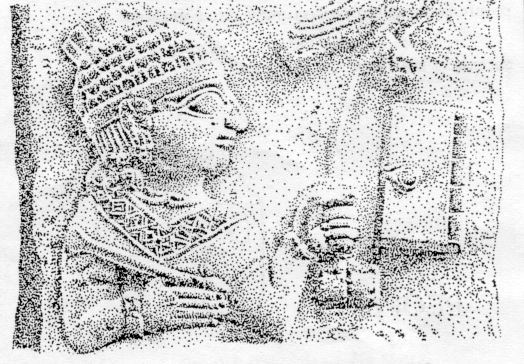

Reprinted with permission from Gazette du Livre Médèvale, No. 17 (Automne, 1990), 31-32. The Gazette recently to a new address: C.N.R.S.-C.E.M.A.T.; 7, rue Guy-Moquet-B.P. 8; F-94801 Villejuif-CEDEK; France.
Hardly any textbook in which the origin of the codex is discussed, fails to assure us that it was the wooden tablets from which the construction of the codex was derived. Even authorities proclaim this with great certainty, so Roberts and Skeat (The Birth of the Codex, 1983, p. 1): "There has never been any doubt about the physical origin of the codex, namely that it was developed from the wooden writing tablet .... " The certainty with which the validity of this statement is taken for granted is in marked contrast with the lack of any substantial evidence or exploration as to the exact nature of this genetic relationship. Yet the assumption is being repeated again and again without any sign of intellectual discomfort about the weakness of the argument. A semantic shift in a word cannot be taken as proof of genetic relationship. The analogy in the geometrical shape of the composing elements or of their ability to be turned along one side is merely superficial; the primitive methods of connecting the elements of the writing tablets (using hinges, metal rings or lacing) have scarcely anything in common with the codex structure.
It is with the complex nature of the codex structure that the above oversimplified analogy ends. The most essential feature of the multisection codex is the linking system with thread using the chain-stitch technique, which connects the folded sections (quires) with each other and often also with the protecting boards. Unfortunately only rarely did the sewing system of early codices survive: often it decayed sooner than the contents, or was destroyed when the covers of the codices were left behind in the desert for the Bedouins to cook their tea-or cut and removed by the scholars of earlier generations for whom the binding structure had no importance. And so these physical aspects of the construction of the first codices have been lost; lost physically, but they also gradually faded away out of the view of scholars in the field.
Yet there is some evidence that the complex codex structure may have existed earlier than generally assumed in the framework of the writing tablet story. The evidence is cut in stone, on the steles from Neo-Hittite Empire, dating from the 8th or 7th century B.C. It was Berthe van Regemorter (Scriptorium, 12, 1958, p. 177-181) who drew attention to this earliest evidence for the codex, suggesting that ink and brush were used for writing and a sophisticated sewing structure and board attachment employed for binding (Fig.). Her observations received limited attention, and were even dismissed, for example by Roberts and Skeat in a note (loc. cit., p. 11): "For representations of wooden writing-tablets in Neo-Hittite reliefs ... see B. van Regemorter, Scriptorum, 12, 1958, pp. 177 ff."
Admittedly a stone relief cannot disclose the nature of the material it represents, but taking for granted that ,we are dealing here with tablets seem to be a rather hasty conclusion. Scholars familiar with the Byzantine bookbinding structures could instead recognize a characteristic type of board attachment, with the sewing thread entering the cover at each sewing station and connecting the points of attachment to form a line (accommodated in a groove) parallel to the spine; there is some evidence of similar types of board attachment in Coptic codices. We do not know what was inside those Neo-Hittite boards, but certainly the type of attachment is quite unlike traditional "wooden tablets." The possibility that we are dealing here with an early evidence of an advanced codex construction, put forward by Van Regemorter, should at least be considered; disregarding it without any argument points to the blinding effect of dogmatic belief in unsupported assumptions, a phenomenon often encountered in the history of science.

Detail of a Neo-Hittite stele, 8th century B.C., excavated at Marash (Paris, Musee du Louvre, A.0. 19222; drawing by the author after a photograph in: B. van Regemorter, loc. cit.).
The study of ancient bookbinding structures has long been neglected in the field of codicology, and even today research in this area is considered by many as a rather unavailing pastime. Admittedly, it concerns one of the youngest branches of the book sciences, in a way still at the nursery age, but getting rid of the fairy tales may help to pave